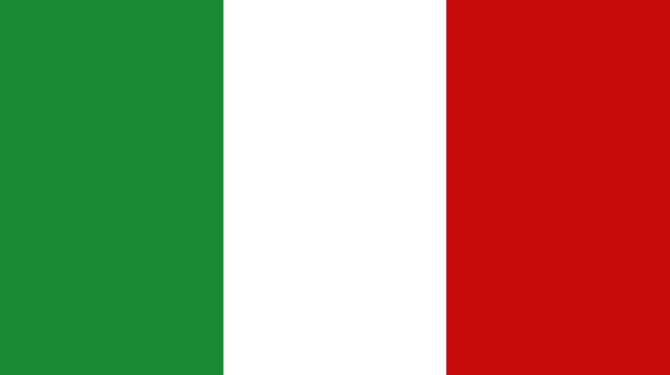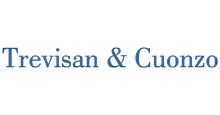
Italy
Fashion Law
Introduction
The fashion industry in Italy generates over EUR 100 billion (exporting about 70% of the products) and employs almost 600,000 people. In the period from 2019 to 2022 the fashion industry saw a steady and considerable growth, reporting an 8% increase in 2021 and a 16% increase in 2022, doubling the estimate based on previous years. Aside from the most notable high-end luxury brands, small and medium enterprises (SMEs) still constitute the majority of the operators in the field.
1 . What are the main intellectual property rights available to protect fashion products?
In Italy, national and European regulations grant specific Intellectual Property Rights (IPRs) to protect different aspects of products within the fashion industry.
1.1. Summary of IPRs
| IPR | Duration | Time and modalities for grant | Pros and cons in the fashion sector |
| Trademarks | 10 years (renewable potentially indefinitely on payment each time of the renewal fee). | Filing of the application before the Italian Patent and Trademark Office (UIBM). Usually granted within 4-6 months from the filing of the application. | Pros: strong and (potentially) perpetual protection against marketing and sales of infringing goods using the registered trademark. Cons: must be renewed every 10 years and effectively used within 5 years to avoid cancellation for non-use. |
| Designs | 5 years (renewable for five-year terms up to a maximum of 25 years, on payment of the renewal fees). | Usually granted within 1-2 months from the filing of the application. | Pros: it protects the appearance of the whole or a part of the product. Cons: it does not protect functional qualities of the product. |
| Trade secrets | Unlimited provided there is no unauthorised disclosure. | Automatic, provided that the information is:
| Pro: potentially unlimited and ‘free’ protection of the secret information. Cons: it does not protect the information from reverse engineering or lawful disclosure. |
| Domain names | 1 year (renewable indefinitely on payment of the appropriate fee). | Registration through recognised channels. Subject to a first-come, first-served policy. | Pro: essential for online visibility and brand awareness. Cons: unavailability of desired domain name once already registered by others. |
| Patents | 20 years (non-renewable) subject to payment of the relevant fees. | Filing of the application before the UIBM. Usually granted within 24-36 months from the filing of the application. | Pros: virtual monopoly for the duration. Cons: novelty and inventive step requirements are difficult to meet (accessories and fabrics may be patentable products). |
| Copyright | For the life of the author plus 70 years. | There is no registration procedure for copyright in Italy and copyright subsists automatically from creation in works protected by copyright. | Pros: strong and long-lasting protection (exclusive economic and moral rights). Cons: the requirements for the protection (in particular, artistic value) are difficult to meet. |
| When there are no exclusive IPRs enforceable, the regulations on unfair competition come into play in order to prevent a competitor from unlawfully profiting from the imitation of competitors’ products and market strategy. | |||
1.2. Trademarks and non-traditional trademarks
According to Articles 12, 13 and 14 of the Italian IP Code, which reflect the provisions set forth by European Union Trademark Regulation (EUTMR), a trademark has to meet the following requirements for registrability: novelty, distinctive capacity and lawfulness.
To maintain protection in Italy the trademark must be renewed every 10 years through the payment of a renewal fee.
The sign must be effectively used within the first five years of registration and its use must not be discontinued for more than five consecutive years, in order to avoid cancellation actions for non-use.
Italian law also recognises the following non-traditional marks:
Colour marks. The eligibility for registration of a colour mark in combination with words and figurative marks has not been questioned; however, the Italian courts, in line with the European Court of Justice (ECJ), are reluctant to grant trademark protection for single colours on the basis that they lack inherent distinctiveness. While the courts look for identification of a recognised colour code, in general they follow the ECJ, which in the Libertel decision (case C-104/01) has ruled that a colour is not normally inherently capable of distinguishing the goods of a particular undertaking except in exceptional circumstances and this is when colours or colour combinations have acquired distinctiveness through use.
Position marks. This relates to the specific way in which the mark is placed or affixed on the product. In the Adidas decision (case C-145/2014), the ECJ held that both the distinct position and the specific number of stripes could be considered sufficient elements to avoid any risk of confusion.
Shape marks. A mark consisting of, or extending to, a three-dimensional shape may be registered unless it consists exclusively of:
- the shape which results from the nature of the goods themselves;
- the shape of the goods which is necessary to obtain a technical result; and
- the shape which gives substantial value to the goods.
Pattern marks. A mark consisting of geometric shapes or designs commonly applied to the surface of products may be registered insofar as it is capable of identifying the product origin.
Unregistered marks. The owner of an unregistered trademark — i.e. a trademark that is used to distinguish goods and services without being previously filed or registered with the Italian Patent and Trademark Office (Ufficio Italiano Brevetti e Marchi (UIBM)) — is granted some rights depending on the extent (i.e. time, volume and geographical extension) of its prior use.
The owner of an unregistered trademark which enjoys a reputation in Italy may object to the subsequent use and/or registration of an identical or similar trademark for identical or similar goods or services. In those circumstances, the unregistered trademark owner may institute infringement proceedings, upon proving that the unregistered sign is reputed.
On the other hand, if the unregistered trademark has only been used locally (i.e. to a limited geographical extent) or in such a way that the trademark cannot be considered as having acquired a reputation, its owner will not be able to object to subsequent identical or similar trademarks, which may therefore be registered, but will retain rights to prior-use strictly within the local territory or to the extent the owner has used it previously.
Black and white marks. The protection of black and white (or grayscale) marks is extended to colour variations unless the colour plays a crucial role in the distinctive character of the sign.
‘Made in’. The ‘Made in Italy’ trademark is associated with products that are, for the most part, designed and assembled in Italy (Italian Decree Law no. 135/2009). The label should highlight the origin of each production phase and guarantee traceability. The ‘Made in Italy’ mark can be applied to products sold on the Italian market only in the event that at least two production phases took place in Italy and the remaining are traceable.
1.3. Design as an alternative or addition to TM registration
Designs are regulated by the Italian IP Code (Articles 32-44) and EC Regulation no. 6/2002. Both two-dimensional drawings and three-dimensional products — with a particular aesthetic shape — fall within this category. They are distinguished by colours, lines, shapes, and materials used, provided that they are new, lawful, and have individual character. A registered design can be used, licensed, transferred or assigned by the owner. Different products in the fashion industry, such as decorations or drawings reproduced on fabrics, 3D models of bags, jewellery, watches, or sunglasses, but also clothing, can be protected by design rights. A registered design gives the owner protection for five years, renewable for a further period of five years up to a maximum of 25 years.
1.4. Copyright as an alternative or addition to TM registration
Copyright protection is governed by Italian Law no. 633/1941 (as amended) and grants the right to exclusive economic exploitation of creative works from the moment of their creation until 70 years after the creator’s death. In the fashion industry, drawings and sketches can be protected by copyright, provided that these creations are new, have creative character and have ‘artistic value’ (Article 2, Italian Copyright Law). Italian case law has always interpreted the requirement of artistic value very strictly and has only attributed artistic value to works of the highest level of industrial design, i.e. at the high end of the design spectrum. Artistic value is, for instance, often revealed by the length of time the work has been appreciated by the public and/or the work’s recognition by art critics (e.g. if the work is shown in a museum).
This legal framework, and the relevant case law, is therefore potentially at odds with the ECJ’s Cofemel decision (case C-683/17), which recently ruled that a design can be protected under copyright law, as long as it is “an original subject matter, in the sense of being the author’s own intellectual creation” and that national legislation shall be precluded “from conferring protection, under copyright, to designs […] on the grounds that […] they generate a specific, aesthetically significant visual effect”. Notwithstanding this clear position from the ECJ, most Italian courts still fail to consider copyright protection as unrelated to artistic value and thus do not disapply the national legislation potentially conflicting with the abovementioned Cofemel principle.
1.5. Any other pertinent IP rights
In the fashion industry patents can cover clothing, footwear and accessories, such as machinery and tools used to manufacture textiles, technical features of fabrics (e.g. softer, more resistant, non-crease), shoes with specific technical features (e.g. Geox).
Recent Italian case law held that a three-dimensional trouser-pocket provides a suitable solution to a precise technical problem, i.e. the reduction of crushing and the consequent increase in comfort and aesthetic appeal, and was therefore considered validly patented.
2 . Beyond intellectual property: what contractual arrangements are useful in manufacturing, distributing and advertising fashion products?
2.1. Manufacturing fashion products
Licence agreements
Licence agreements provide an opportunity for IPR owners to authorise temporary use of the IPRs to a third party in return for a monetary reward, such as a royalty, without transferring ownership. Licence agreements are helpful in achieving product range expansion and widespread dissemination in the market. Trademark licences are the most common licence agreement in the fashion industry and should specify:
- trademark ownership;
- specific terms and conditions under which the use of the trademark is authorised (e.g. duration and territory in which the use is allowed, whether or not exclusivity rights are granted, commitment to preserve the trademark image and prestige and to meet certain standards in manufacturing, prior approval of promotional initiatives or sub-licences and confidentiality covenants); and
- any conditions for the maintenance of the licence (e.g. minimum required turnover).
Non-disclosure Agreements (NDAs)
In business relationships involving know-how, and confidential information (such as creative new ideas — a valued asset for a fashion house) the signing of an NDA is highly recommended.
By an NDA the parties undertake not to disclose, and to maintain confidential, any classified information exchanged from the time of execution and during the contractual relationship.
In order to be effective and enforceable, an NDA should contain the following key provisions:
- definition of the confidential information and of permitted uses;
- prohibition of disclosure and sub-contracting to third parties without prior approval;
- penalties for disclosure;
- implementation of appropriate security measures to preserve confidentiality;
- duration (possibly perpetual) of the confidentiality obligations; and
- identification of people authorised to access the confidential information.
Subcontract agreements with suppliers/in-house manufacturing
Subcontract agreements are regulated by Italian Law no. 192/1998, which provides that a contractor undertakes to carry out work on behalf of a client on semi-finished products or raw materials supplied by the client, or undertakes to supply the client with products or services to be incorporated or otherwise used in the economic activity of the client, or, in the production of a complex product, in accordance with plans, technical and technological knowledge, models or prototypes supplied by the client. This type of contract must be in writing. Since it involves the transfer and sharing of know-how and other IPRs, it is important to clearly establish how the subcontractor may use said IPRs. The law prohibits abuse of economic dependency and includes provisions (for example relating to termination) to protect the sub-contractor.
2.2. Distributing fashion products
Agency agreement
Agency agreements are governed by the Italian Civil Code (ICC) and the parties can opt to apply the relevant national collective bargaining agreement. No specific rules apply to the fashion and luxury sectors. To be valid, a commercial agency agreement must be in writing.
In this type of agreement, the agent is appointed to promote, on a regular basis, the conclusion of contracts on behalf of the principal in a specified geographical area, upon the payment of consideration (usually a percentage of the agreements concluded due to the agent’s activity).
In Italy, agency agreements usually include the following provisions:
- the geographical area in which the agent will operate;
- the commission paid to the agent by the principal;
- powers to represent and bind the principal;
- exclusivity and non-compete rights;
- termination indemnities.
The contract can be concluded for a definite or indefinite period. In this latter case, each party has the right to withdraw by giving written notice, unless there are serious grounds for the immediate termination of the contract. Any clause shifting the liability for breach of third party onto the agent is prohibited.
Under the conditions provided by Article 1751 ICC, upon termination of the contract the principal must pay a termination payment to the agent.
Agency agreements tend to provide broad protection to agents, and consequently are less popular with fashion industry brand owners who tend to prefer distribution agreements.
Selective distribution online in high-end fashion and trademark protection
Pursuant to Article 1(g) of EU Regulation 720/2022 selective distribution consists of a “system where the supplier undertakes to sell the contract goods or services, either directly or indirectly, only to distributors selected on the basis of specified criteria and where these distributors undertake not to sell such goods or services to unauthorised distributors within the territory reserved by the supplier to operate that system”. These types of agreements are useful for luxury brand owners in controlling the quality of dealers who can market and sell the brand’s products. According to ECJ case law, selective distribution systems may fall outside the ban on agreements restricting competition provided by Article 101(1) of the Treaty on the Functioning of the European Union (TFEU) if:
- the nature of the goods necessitates a selective distribution system (e.g., to preserve the quality of luxury goods);
- resellers are chosen on the basis of objective qualitative criteria, laid down uniformly for all potential resellers and not applied in a discriminatory manner; and
- the criteria must not go beyond what is necessary.
Recent Italian case law clarified that when a manufacturer of luxury goods relies on a selective distribution and a third party sells those products outside the selective distribution system (i.e. through other shops and outlets) this will result in trademark infringement only if:
- the selective distribution system (i.e. contracts) are in compliance of antitrust law;
- the products bearing the trademark are luxury items; and
- there is real harm to the image of prestige the manufacturer is trying to maintain, through use and adoption of a selective distribution system (this is the most difficult requirement to prove).
Co-branding and co-marketing
Co-branding is when two brands join forces to manufacture a single product, or provide a specific service. Co-marketing occurs when two brands cooperate to promote products and services for which they share a common philosophy.
Such agreements can be instrumental in helping a brand reach a wider audience. Careful evaluation of all aspects in the co-branding and co-marketing agreements — such as brand positioning, marketing, royalties, and compensation for damages — is required.
Franchising and alternative sales model agreements
Franchising agreements:
- must be in writing;
- shall have a duration of minimum three years; and
- must include, inter alia, an account of the initial investments, the royalties, the minimum turnover required, the conditions for renewal and termination, the conditions of any exclusive territory clause and the technical details of the services granted by the franchisor.
In addition to the mandatory provisions, franchising agreements usually include the following clauses:
- territory;
- non-compete;
- supply obligations;
- management of IP rights and know-how ensuring the franchisee (i.e. entities using the store under the brand name) uses IP rights in compliance with the brand’s policy;
- advertising campaigns;
- non-transferability;
- store interior decoration and furnishing; and
- stock and post-sale assistance services management.
A franchisor must provide the prospective franchisee with a full copy of the agreement to be signed together with other documents to disclose the franchisor’s actual position within the market.
2.3. Advertising fashion products
Employing fashion models
When collaborating with modelling agencies, clearly defining the framework of the model’s activity and the use of their image is essential. For example, during a photoshoot it is important for every model to sign a release form for the use of their images and for the organisers to obtain a licence from the photographer for the use of the photographs.
Social media, influencers and brand ambassadors/celebrities
Agreements entered into with brand ambassadors should be structured in such a way as to clearly outline the role and influence intended in relation to the promotion of the brand and its products. The agreements should also indicate the fees to be paid to the brand ambassador and include other standard contractual clauses (e.g. representation and warranties, jurisdiction, confidentiality, code of conduct when promoting the products, copyright arrangements, product use and ownership and consequences for any contractual breach). Standard practice usually dictates that the products are supplied to the brand ambassador free of charge and cannot be subject to resale. In relation to copyright, the agreement may provide that influencers own the copyright on the promotional work they create, meaning that any future use following the termination of the agreement will require their consent. When promoting products through social media the content creator or influencer must clearly indicate in their material that its content constitutes an advertisement and the name of the sponsor. The Digital Chart Regulation, 1st June 2023, adds criteria to ensure clear identification of the promotional nature of online marketing communications such as inserting labels and hashtags at the beginning of the online message (for example, “Pubblicità/Advertising”; “Promosso da [Brand]/Promoted by [Brand]”; “Sponsorizzato da [Brand]/Sponsored by [Brand]”). On 16 January 2024 the Italian media regulation authority (AGCOM) published the Guidelines aimed at ensuring the compliance by influencers with the Consolidate Law on Audiovisual Media Services (Italian Legislative Decree no. 208/2021) and establishing a technical panel to discuss further measures to regulate the matter.
Advertising standards, relevant authorities and advertising practice
The Italian Advertising Standard Institute (IAP) is a private authority responsible for ensuring that marketing communications are honest, truthful, and correct. The IAP Giurì is a body set up by the IAP to enforce the Advertising Standards Code. If the Giurì finds that an advertising practice is in breach of the Code, it has the power to issue an injunction.
Companies that intend to release a campaign can ask the IAP to provide an opinion on the compliance of the campaign with the Self-Regulatory Code for Commercial Communications.
3 . What regulations govern online marketing and how are the rules enforced?
The main concerns with e-commerce relate to tackling unlawful conduct, counterfeiting and the issues relating to selective distribution in the luxury sector.
In Italy, the online environment is currently governed by many different pieces of legislation:
- Italian Civil Code;
- Italian Legislative Decree no. 70/2003, which implemented the 2000 E-commerce Directive (B2B and B2C);
- GDPR (EU Regulation no. 2016/679) on privacy and data protection;
- Consumer Code (B2C) and the 2020 New Deal for Consumers; and
- Information Society Services’ Regulation and the Digital Services Act.
Information Society Services’ Regulation and Implications of the Digital Services Act. Providers of information society services (that is, any service normally provided for remuneration, at a distance, by electronic means and at the individual request of a recipient) are subject to Directive 2000/31/EC (E-Commerce Directive), implemented by the Italian Legislative Decree no. 70/2003.
Recently, a new set of uniform rules was established at European Union level by EU Regulation 2022/2065, the Digital Services Act, applicable from 17 February 2024. While the E-Commerce Directive remains the cornerstone of digital regulation, the Digital Services Act sets out the requirements to be met by all online intermediaries offering their services in the single market, whether they are established in the EU or outside. The role, size and impact of different online actors determine their obligations.
Important rules on liability include the following:
- platforms have to put in place measures to deal with illegal goods, services or content online, such as a mechanism for users to flag such content;
- platforms and other intermediaries are not liable for users’ unlawful behaviour unless they are aware of illegal acts and do not act expeditiously to remove or disable them;
- hosting providers, if made aware of information giving rise to a suspicion that a serious criminal offence involving threat to life or safety has taken place or is likely to take place, have a formal obligation to report to law enforcement or judicial authorities.
In addition, the Digital Services Act imposes further key obligations that apply to all intermediary services:
- providers have to publish annual reports on the content moderation they engage in, including information about illegal content, use of automated tools and complaints received;
- providers not established in the EU but providing services therein must appoint a legal representative;
- hosting services must establish notice-and-action mechanisms which users can access to report allegedly illegal content;
- platforms must take measures to protect against misuse;
- very large platforms and online search engines must take risk-based action and independent audits of their risk management systems to prevent the misuse of their systems.
3.1. Consumer protection regulations
Consumer protection rules are set out in the Italian Consumer Code.
The 2020 EU New Deal for Consumers aims at harmonising and modernising the protection of consumers in line with the digital transformation. It draws together several EU Directives on contracts for the supply of digital content and services, sale of goods, enforcement and updating of consumer protection rules and action for the collective interest of consumers, which are implemented by Italian Legislative Decrees no. 170/2021, no. 173/2021, no. 26/2023 and no. 28/2023.
3.2. Physical store and online store layout
In Italy, the layout of a concept physical store is protected, both as design as well as work of architecture (under Article 2(5) Copyright Law), on condition that it is identifiable as a whole and confers a certain degree of creator originality, such as to make it distinguishable from the store layout of competitors (Kiko v. Wycon - Italian Supreme Court, decision no. 8433/2020 of 30 April 2020).
A website layout is not specifically protected by the Italian Copyright law. However, according to Italian case law, a website may be afforded protection pursuant to Article 1 Copyright Law, provided that it is creative and original.
4 . What are the most relevant unfair competition rules for fashion businesses and how do the courts interpret and enforce these rules?
Competition law in Italy is concerned with deceptive trade practices or circumstances where consumers are misled. The main applicable laws are set out in the 2020 New Deal for Consumers and Article 2598 ICC.
Article 2598 ICC list some specific types of behaviour that are expressly prohibited:
- misleading consumers by using distinctive signs belonging to others or by imitating a competitor’s products;
- appropriating a competitor’s merits or commenting on a competitor’s products bringing them into disrepute; or
- using any other means which are not in accordance with the principles of fair conduct and are likely to damage the business of others.
This provision applies only when the parties are:
- entrepreneurs in direct competition, marketing their products;
- in the same market (i.e. they sell the products to a similar group of consumers); and
- where the products belong to the same product sector.
According to Italian case law, unfair competition also exists in a ‘potential scenario’, i.e. a possible extension or expansion in the future of the competing business activity (in terms of significant likelihood), and in hypothetical preparatory activities to the exercise of the enterprise. In this case, competition is assessed on the basis of three different parameters:
- Territory: the area in which the business can expand.
- Time: from the year of incorporation to liquidation.
- Products: similar products or substitutes.
Parasitic unfair competition is one of the most common unfair practices in the fashion industry. It entails imitating a competitor’s trade practices in their entirety and implementing/imitating any of their new entrepreneurial initiatives. According to Italian case law, parasitic unfair competition can also apply when each individual product does not entirely imitate a competitor’s product and/or in the absence of likelihood of confusion. Settled case law assesses the existence of parasitic unfair competition by analysing entrepreneurial activities considered as a whole and individually. Multiple lawful acts can lead to an unlawful conduct in the event the lawful acts are connected with the clear intent to achieve an objective and undeserved competitive advantage.
The most common measures issued by Italian courts are:
- injunction, i.e. an order instructing a person/entity to refrain from unlawful behaviour;
- withdrawal of offending products from the market;
- compensation for damages and/or reimbursement of unlawfully obtained profits; and
- publication of the decision in sector-related press or newspapers.
5 . Is there any regulation specifically addressing sustainability or ESG (Environmental, Social and Governance) in the fashion industry?
The Italian fashion industry reacted to the increasing awareness and relevance of Environmental, Social and Governance (ESG) issues with several initiatives, including:
- Environmental: manufacturing sustainable fabrics and materials, standardising the manufacturing, conservation and marketing procedures and obtaining environmental labels such as GOTS (Global Organic Textile Standard), Oeko-Tex, Bluesign, the Italian AIAB (Associazione Italiana Agricoltura Biologica), and PSV (Plastica Seconda Vita). By way of example, a relevant international standard frequently used in the Italian fashion industry is the ISO 14855, which establishes a time limit of six months within which the product’s biodegradation process must have reached at least 90%.
- Social: regulating working conditions and obtaining social labels such as Equo Garantito, Fairtrade International, Fair Wear Foundation, and Certified B Corporation.
- Governance: increasing the transparency and control of the supply chains, as well as shining a light on labour and money laundering issues.
The ‘label rush’ mentioned above and the lack of a systematic regulatory framework in the management of certifications have also led to the dissemination of false or deceptive information regarding an organisation’s green environmental strategies. This phenomenon, known as ‘greenwashing’, is defined by Article 12 Italian Advertising Code.
On 23 February 2022 the European Commission adopted a proposal for a Directive on corporate sustainability due diligence (potentially applicable to the fashion industry). This is currently under discussion before the European Parliament and the Council.
On 22 March 2023 the European Commission published a proposal for a Directive on Green Claims, which aims to regulate companies’ voluntary environmental claims concerning the environmental impact and performance of their products/services and environmental labels, like the EU Ecolabel.
6 . Customs monitoring: do any special import and export rules apply to fashion products?
The Italian Customs and Monopolies Agency (ADM) plays an important role in fighting the circulation of counterfeit products by monitoring the shipments that pass through the Italian borders and/or are destined for the Italian market.
In order to activate this monitoring service, an application for action (AFA) must be made by a rights holder. The AFA must include a list of the relevant IPRs; any IPRs not included cannot trigger an action from the ADM.
When a shipment is suspected of infringing IPRs, the ADM will detain them and will notify the rights holder or its representative of the detention, seeking confirmation within 10 working days as to whether the goods infringe IPRs. The deadline may be extended with the approval of the ADM. Upon receipt of the rights holder’s declaration, the ADM reviews it and decides whether to seize the products and pass the case file on to the Public Prosecutor’s Office, which handles the criminal proceedings.
The ADM can identify the products as:
- counterfeit (infringing a trademark or patents registered in an EU Member State and listed in the AFA); or
- pirated (infringing a copyright or related right, or a design listed in the AFA).
The disposal strategies currently in use range from open-air burning, shredding, crushing and burying in landfills, to recycling and donating to charities.
In Italy, the EU Regulation 608/2013 rules regarding the destruction of counterfeit products cannot apply since they conflict with national laws regarding criminal proceedings.
7 . Frequently Asked Questions (FAQs)
What business model should I use and how does licensing work?
Within the Italian fashion industry there are both partnerships and Limited/Joint Stock companies, with a tendency to favour the latter. The main advantage of Limited/Joint Stock Companies, over partnerships, is that the individual shareholders are not liable with their personal assets for the obligation of the company. Advantages of partnership are mainly simplified bureaucracy and accounting records and certain tax deductions for the individual partners.
What are the grounds for bringing an effective infringement action when our business’s innovative clothing designs are evidently being copied during the short fashion seasons?
The first step is usually to send a strongly worded cease and desist (C&D) letter. In the event the infringing party does not comply with the requests in the C&D letter, the right holder may file a motion for preliminary injunction, which must fulfil two requirements:
- prima facie case: an enforceable right; and
- irreparable harm/urgency given by the matter at hand.
If these requirements are met, different measures can be granted by the court, including an injunction against the continuation of manufacturing and/or sales activities, the seizure of infringing products and the withdrawal from the market, a search and description at the location of the infringing products (useful for acquiring evidence) and the publication of the decision in the specialised press.
Our brand is subject to online counterfeiting. What cost-effective action can we take and can we order the intermediary service provider (ISP) to take down bad faith websites selling imitation copies of our brand?
If a business faces online sale of counterfeit products, they should send a notice and takedown letter to the hosting provider requesting the takedown and demonstrating evidence of IPR ownership (e.g. trademark certifications). Should the hosting provider not respond it is possible to obtain a court order for non-compliance reinforced with penalty measures. If the host provider is made aware of the unlawful content and does not act expeditiously to remove or disable the content, they will be liable and may be ordered to pay damages.
3-6 PQE Corporate M&A Associate
Job location: London
Projects/Energy Associate
Job location: London
3 PQE Banking and Finance Associate, Jersey
Job location: Jersey


 Alice Fratti
Alice Fratti Beatrice Cazzanelli
Beatrice Cazzanelli Carlo Colaci
Carlo Colaci Francesca Ferrero
Francesca Ferrero

